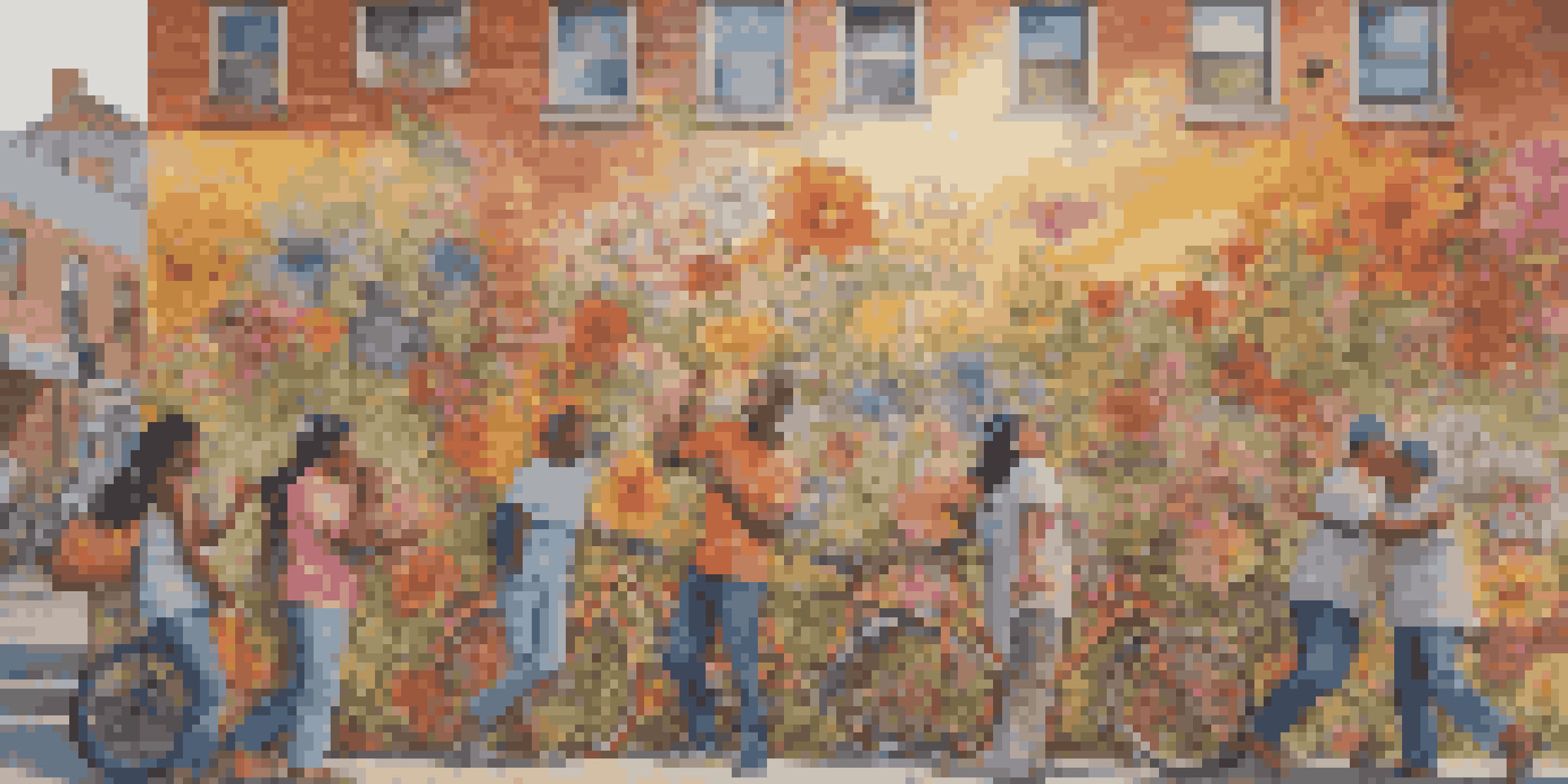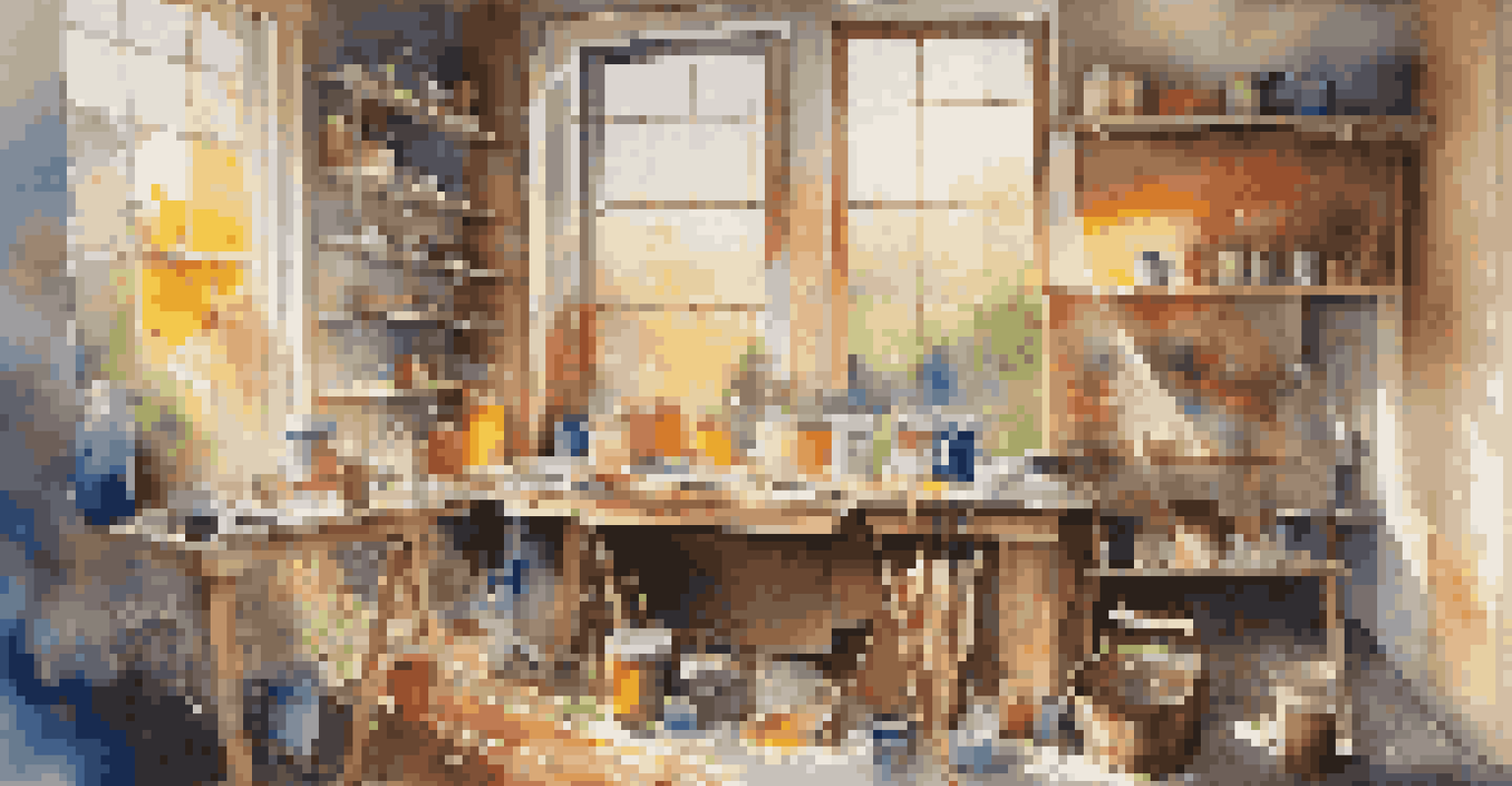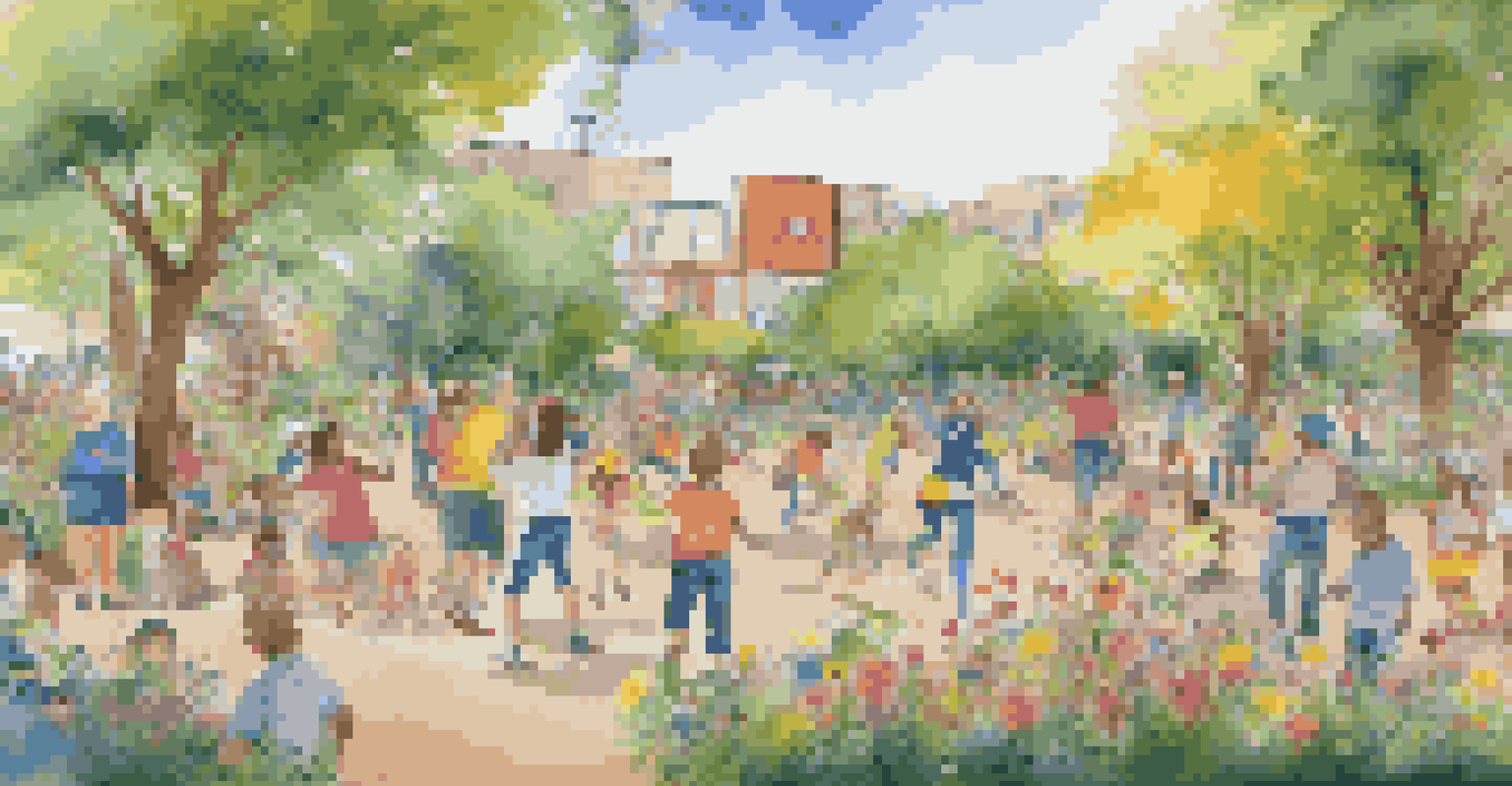Art's Role in Documenting the Human Condition Across Cultures

Art as a Reflection of Cultural Identity
Art serves as a mirror, reflecting the unique identity of various cultures. Through visual arts, music, and literature, we can see how different societies express their values, beliefs, and traditions. For instance, indigenous art often incorporates elements from nature, symbolizing the deep connection these communities have with their environment.
Art is the most beautiful of all lies.
Moreover, art can convey a sense of belonging and pride within a culture. Traditional dances, folklore, and crafts connect generations, preserving history and fostering unity. As such, each artistic piece becomes a storytelling device that encapsulates the essence of a community's identity.
In this way, art not only showcases cultural diversity but also fosters understanding among different groups. By appreciating and engaging with art from various backgrounds, we can build empathy and break down cultural barriers, enhancing our collective human experience.
Art as a Tool for Social Commentary
Throughout history, artists have used their work as a platform to address social issues and injustices. From paintings that depict war's horrors to music that speaks against oppression, art has the power to provoke thought and inspire change. For example, Picasso's 'Guernica' is a powerful anti-war statement that resonates even today.

This ability to comment on society allows art to act as a catalyst for social movements. Artists like Banksy use street art to raise awareness about political and social issues, engaging the public in important dialogues. Their work compels viewers to confront uncomfortable realities and consider different perspectives.
Art Reflects Cultural Identity
Art serves as a mirror for different cultures, showcasing their values, beliefs, and traditions through various forms of expression.
By shedding light on societal challenges, art encourages critical reflection and action. It connects people across cultures, uniting them in shared experiences and aspirations for a better world.
Storytelling Through Visual Art
Visual art, in its many forms, tells stories that transcend language and cultural barriers. From cave paintings of ancient civilizations to contemporary digital art, visuals convey emotions and narratives that resonate universally. Take, for example, the iconic 'Mona Lisa,' which has intrigued viewers for centuries with her enigmatic expression.
The role of the artist is to ask questions, not to answer them.
Artworks often encapsulate the essence of a moment in time, allowing future generations to glimpse past lives. Through colors, shapes, and compositions, artists can evoke feelings and ideas that words sometimes fail to capture. This ability to tell stories visually enriches our understanding of humanity's shared experiences.
Additionally, visual storytelling fosters connections and dialogues among cultures. By interpreting the same artwork through different cultural lenses, we can appreciate the richness of diverse perspectives and experiences.
The Emotional Power of Music Across Cultures
Music is a universal language that transcends cultural boundaries, often eliciting deep emotional responses. From the haunting melodies of traditional folk songs to the uplifting rhythms of contemporary pop, music reflects the human experience in profound ways. For example, the blues originated from African American communities, expressing sorrow and resilience through its soulful tunes.
Moreover, music serves as a means of cultural expression and preservation. Festivals, ceremonies, and rituals often incorporate music to convey stories, celebrate heritage, and foster community bonds. This helps maintain cultural identity while allowing for the evolution and fusion of different musical styles.
Art as Social Commentary
Throughout history, artists have utilized their work to address social issues, inspire change, and provoke thought within society.
Ultimately, music's emotional resonance connects people across cultures, fostering empathy and understanding. It reminds us of our shared joys and struggles, highlighting the common threads of humanity that bind us all.
Literature as a Window into Human Experience
Literature provides a rich tapestry of the human experience, offering insights into different cultures and perspectives. Through novels, poetry, and essays, writers explore themes of love, loss, identity, and resilience that resonate across time and space. For instance, Chimamanda Ngozi Adichie's works delve into Nigerian culture and the complexities of identity in a globalized world.
Reading literature from diverse cultures allows us to walk in others' shoes, fostering empathy and understanding. It challenges our assumptions and broadens our worldview, inviting us to engage with experiences that may be vastly different from our own. This literary journey enriches our appreciation of humanity's shared struggles and triumphs.
Furthermore, literature can serve as a powerful tool for social change, illuminating injustices and amplifying marginalized voices. By engaging with these narratives, we are reminded of the importance of representation and the impact of storytelling in shaping our world.
The Role of Art in Healing and Resilience
Art can play a significant role in healing, offering solace and hope in times of crisis. Many cultures have long recognized the therapeutic benefits of artistic expression, whether through painting, music, or dance. For example, art therapy is used to help individuals process trauma and express emotions that may be difficult to articulate.
Creating art can foster resilience, allowing individuals and communities to cope with adversity. During challenging times, people often turn to creative outlets as a means of finding strength and connection. The act of creating can transform pain into something beautiful, serving as a powerful reminder of the human spirit's endurance.
Art Connects Generations
Art bridges generations by preserving cultural heritage and allowing contemporary artists to blend traditional techniques with modern themes.
Moreover, community art projects can promote healing by bringing people together in shared experiences. These collaborative efforts can build solidarity and support, creating a sense of belonging and hope in difficult times.
Art as a Bridge Between Generations
Art often serves as a bridge between generations, allowing the wisdom and experiences of the past to inform the present. Traditional crafts, storytelling, and heritage arts are passed down, connecting younger generations with their cultural roots. This intergenerational exchange fosters respect and appreciation for history and tradition.
Moreover, contemporary artists frequently draw inspiration from their cultural heritage, blending traditional techniques with modern themes. This fusion creates a dialogue between past and present, enabling the evolution of art while honoring its origins. For instance, many Indigenous artists incorporate traditional motifs into contemporary works, celebrating their heritage while engaging with current issues.

By nurturing this connection between generations, art promotes continuity and cultural preservation. It serves as a reminder of our shared human journey, empowering us to learn from the past as we shape the future.
The Global Impact of Art in Understanding Humanity
Art transcends borders, allowing people from different cultures to share their stories and experiences. In an increasingly interconnected world, the exchange of artistic ideas fosters mutual understanding and respect. Events like international art festivals or exhibitions provide platforms for artists to showcase their work, bridging cultural divides.
Furthermore, the rise of digital platforms has expanded the reach of art, enabling diverse voices to be heard on a global scale. Social media can amplify artists' messages, allowing their work to resonate with audiences far beyond their local communities. This democratization of art helps to highlight underrepresented narratives and enriches the global artistic landscape.
Ultimately, art serves as a powerful tool for promoting dialogue and understanding. By celebrating our shared humanity through artistic expression, we can create a more compassionate and interconnected world.